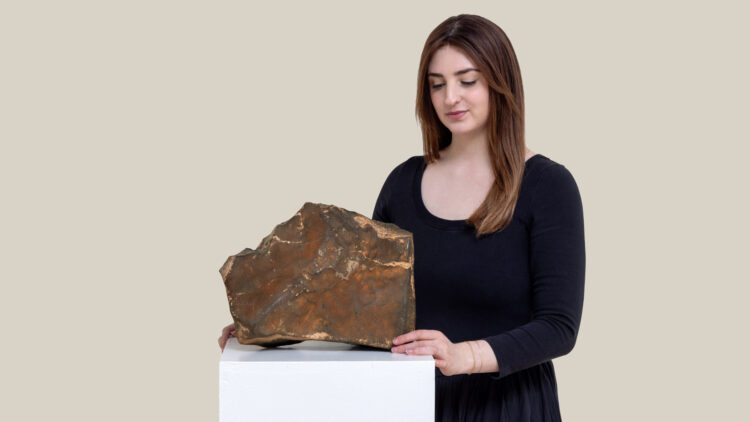It began in the endless sands of the Sahara. A meteorite hunter spotted a strange rock from Mars— heavier than it looked, pitted from its long journey through space.
Scientists would later name it NWA 16788, a fragment of Mars that had traveled 140 million miles after being kicked off its home planet by an asteroid strike. At 54 pounds (25 kilograms), it’s the largest piece of Mars ever found on Earth.
Last month, the meteorite made headlines again — not for where it landed, but for where it sold. At Sotheby’s in New York, it fetched more than $5 million, setting a new world record. But in Niger, the country where it was unearthed in November 2023, the sale has triggered an official investigation.
President Abdourahamane Tiani has called it possible “illicit international trafficking” and quickly banned the export of “precious stones, semiprecious stones and meteorites” to ensure such discoveries stay traceable.
Sotheby’s added to their defense: “As with everything we sell, all necessary documentation was in order at each stage of its journey, in accordance with best practice and the requirements of the countries involved,” the auction house told The Associated Press.
Authorities are now examining the Convention on the Protection of Cultural Heritage (UNESCO), which both Niger and the United States have signed, to determine if they can claim the meteorite as part of the nation’s cultural heritage.
From desert discovery to auction spotlight
After its discovery in northwestern Niger, NWA 16788 quietly slipped into the global meteorite trade. It was sold to an-still unknown- international dealer, then made its way to a private gallery in Italy. There, scientists from the University of Florence in Rome studied its mineral structure, hoping to uncover more about the surface of Mars.
The rock had a short public debut in Rome before disappearing again, only to resurface months later in New York’s auction rooms. Its journey mirrors a growing market for meteorite hunting in desert nations and in Morocco, where rare finds can command staggering prices. Morocco requires that meteorites found within its borders be returned, but enforcing such rules across vast, remote landscapes remains difficult.
Who’s the owner of the Martian rock?
The sale raises a thorny question: who has the right to claim a rock that fell from space? Cultural heritage lawyer Patty Gerstenblith says the UNESCO convention can cover meteorites, but Niger would need to prove it legally owned the rock and that it was stolen. “If the meteorite was not stolen and if it was properly declared upon import into the U.S., then it would not seem that Niger can recover the meteorite,” she explained.
Paleontologist Paul Sereno, who has spent years working in Niger’s Sahara, believes the answer is simpler. “When you have laws that clearly say rare minerals like meteorites are cultural artifacts, you cannot simply come in and take something that is so unique and valuable to a country,” he said. “We’re just not in the colonial area anymore.”
More than a rock from the sky
For scientists, NWA 16788 is a priceless research opportunity. For collectors, it’s a rare status symbol. But for Niger, it represents something deeper; a piece of the country’s story, discovered on its land and shaped by its desert.
This situation is a first. And this is what makes it so important. This investigation is setting a significant precedent for how rare extraterrestrial finds are going to be handled in the future.
The fate of NWA 16788 may depend as much on politics and law as on science. And while it began as a silent traveler from another world, its journey has become a very human drama, stretching from the sands of Niger to the halls of international debate.

